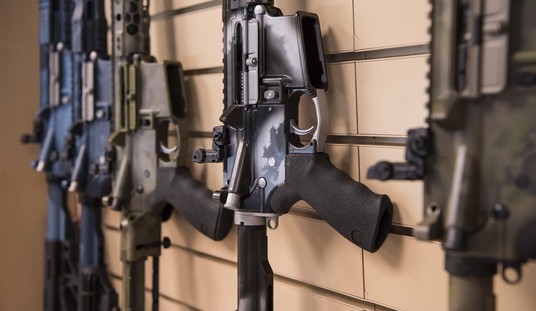A rookie NYPD cop who negligently discharged his duty sidearm in an apartment stairwell, striking and killing an innocent man, has been indicted for manslaughter.
Peter Liang will face criminal charges that can send him to prison for up to 15 years for the death of Akai Gurley on Nov. 20, 2014, a source said.
A grand jury started hearing the case on Feb 4. A spokeswoman for the Brooklyn district attorney declined to comment.
A source said Liang was indicted for a top count second-degree manslaughter, which means he acted recklessly, among other charges.
Liang discharged one bullet when patrolling the stairways of the Pink Houses in East New York, striking [Akai] Gurley in the chest as the man stood in the landing a floor below.
Officer Laing and his partner Shaun Landau entered a darkened stairwell in the process of doing a “vertical patrol” from floor-to-floor through an apartment building. Liang had his flashlight in one hand, and inexplicably had his firearm in the other.
28-year-old Akai Gurley entered the stairwell below the officers. A shot was discharged by Liang for reasons that haven’t adequately been explained, but at least one account said that Liang was trying to open a door with his gun hand while holding his handgun…
Yeah.
The bullet fired by Liang’s gun struck Gurley in the chest. He later died.
New York Police Department brass have called the incident an “accident.” It was nothing of the sort, and I feel it is dishonest to characterize the incident as such.
An accidental discharge is when a firearm fires because of some sort of mechanical failure through no fault of the user. That was not remotely the case here.
This fatal incident was clearly negligent discharge caused by dangerous, reckless, and negligent gun-handling, and is perhaps indicative of an endemic problem within the NYPD.
Laing is a young officer in a police force routinely criticized for minimal training standards, recruiting from a talent pool where prior firearms experience is almost non-existent due to the draconian gun control laws that have effect. Put bluntly, academy recruits know almost nothing about firearms before they enter the academy, receive minimal and archaic training while in the academy, and most receive little in the way of continuing education once they hit the streets. They must periodically requalify with their firearms against fixed targets at close range under very generous time constraints.
They simply aren’t trained to a standard that anyone should feel comfortable with considering the city’s unforgiving population density (8.3 million souls packed into just 302.64 square miles), where every inadvertent shot has a higher-than-average likelihood of striking living flesh. It is this combination of poor training and a high population density that was behind our call in September of 2013 to withdraw firearms from most NYPD officers, instead issuing tasers to the majority. The scare firearms training budget and resources could them be used to bring supervisors and special services units up to a more competent level to be more of a threat to bad guys than they are innocent New Yorkers who find themselves downrange.
A taser-armed Peter Liang wouldn’t have killed Akai Gurley with a negligent taser shot.
A competently-trained Peter Laing wouldn’t have his weapon drawn in the first place, and certainly wouldn’t have attempted to use his gun-hand to open a door.
But Officer Peter Liang was failed by the NYPD’s inadequate training, and that inadequate training contributed to Akai Gurley losing his life.
Perhaps if New York City Police Commissioner Bill Bratton was more interested in training his officers and less interested in attempting to turn citizens into felons, Akai Gurley might still be alive today.







Join the conversation as a VIP Member